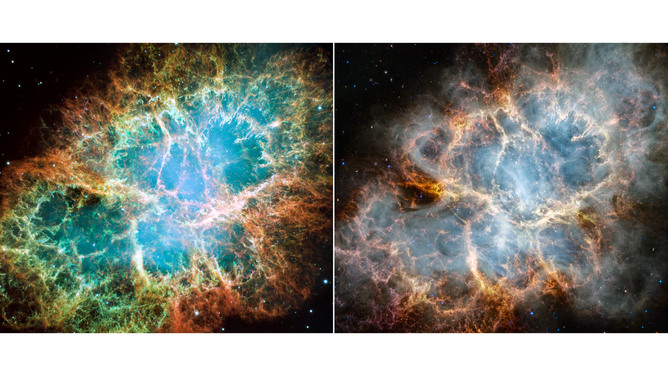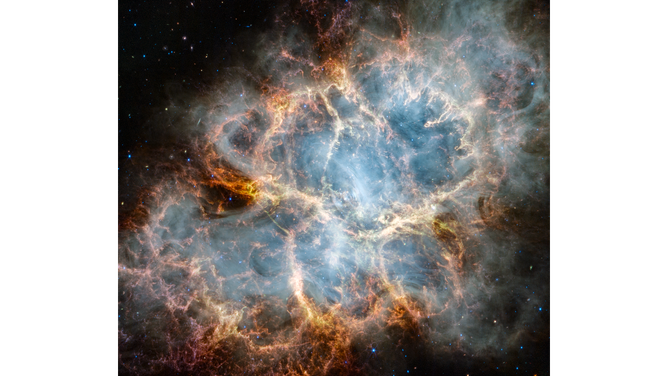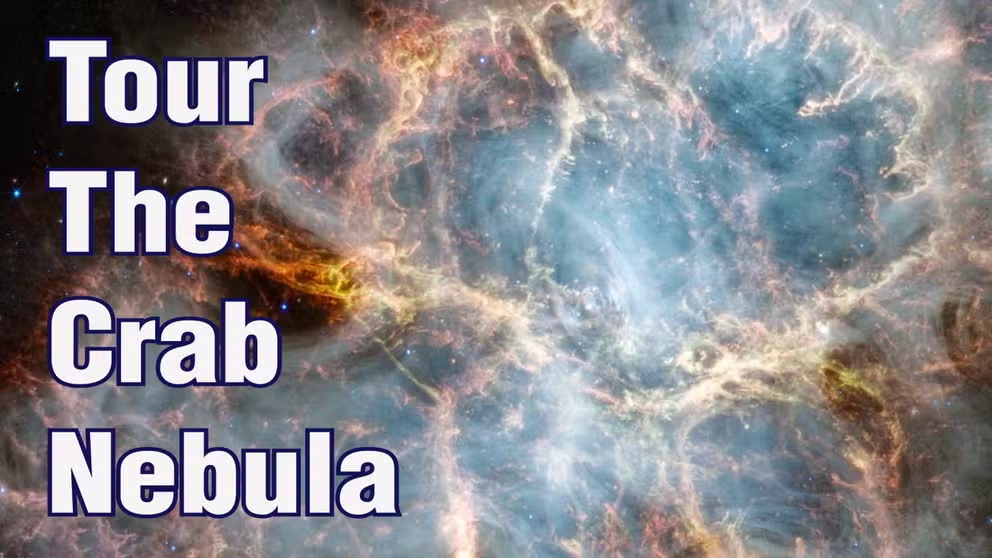Check out this eerie new view of Crab Nebula provided by the Webb telescope
A team at Princeton University used Webb’s powerful instruments to learn more about the explosion that produced the Crab Nebula.
James Webb Space Telescope captures Crab Nebula in new light
NASA's James Webb Space Telescope imaged the supernova remnant, known as the Crab Nebula using its NIRCam and MIRI. This video takes you on a tour of the eerie image.
James Webb Space Telescope's powerful capabilities were used to gaze upon the Crab Nebula, one of the most mysterious objects in the universe, in a new light.
Located 6,500 light-years away in the constellation Taurus, the Crab Nebula is what's left over after the explosive death of a massive star, also known as a supernova remnant.
WEBB REVEALS GALAXIES IN EXQUISITE DETAIL
A team at Princeton University used Webb’s Near-Infrared Camera (NIRCAM) and Mid-Infrared Instrument (MIRI) to learn more about the explosion that produced the Crab Nebula.

A side-by-side comparison of the Crab Nebula as seen by the Hubble Space Telescope in optical light (left) and the James Webb Space Telescope in infrared light (right). The Hubble image was released in 2005, while astronomers have recently used Webb’s NIRCam (Near-Infrared Camera) and MIRI (Mid-Infrared Instrument) to reveal new details of the Crab Nebula.
(NASA)
The side-by-side image above shows how the Hubble Space Telescope viewed the Crab Nebula in optical light compared to Webb's infrared light. NASA noted that one of the key differences between the Hubble and Webb images is the details seen in fine dust grains mapped out by Webb for the first time.
"Webb’s sensitivity and spatial resolution allow us to accurately determine the composition of the ejected material, particularly the content of iron and nickel, which may reveal what type of explosion produced the Crab Nebula," Tea Temim, with Princeton University, said.
The space agency also pointed out the inner workings of the Crab Nebula are more prominent in Webb's image, as seen in the ghost-like material throughout the object's interior.

NASA’s James Webb Space Telescope has gazed at the Crab Nebula in the search for answers about the supernova remnant’s origins. Webb’s NIRCam (Near-Infrared Camera) and MIRI (Mid-Infrared Instrument) have revealed new details in infrared light.
(NASA)
NASA said the Crab Nebula's rapidly rotating pulsar "heart" can be seen in the image above by following the circular ripples toward the middle of the cosmic structure with the bright white dot in the center.
HOW THE TELESCOPE BECAME OUR WINDOW INTO THE UNIVERSE
The Crab Nebula has fascinated scientists long before the Hubble image was taken nearly 20 years ago. The energetic event tied to the Crab Nebula was noted by astronomers in the 11th century, according to NASA. Scientists are still seeking to understand its behavior and what type of explosion caused the puzzling object.
Hubble will observe the Crab Nebula once again within the next year for the first time in two decades.
